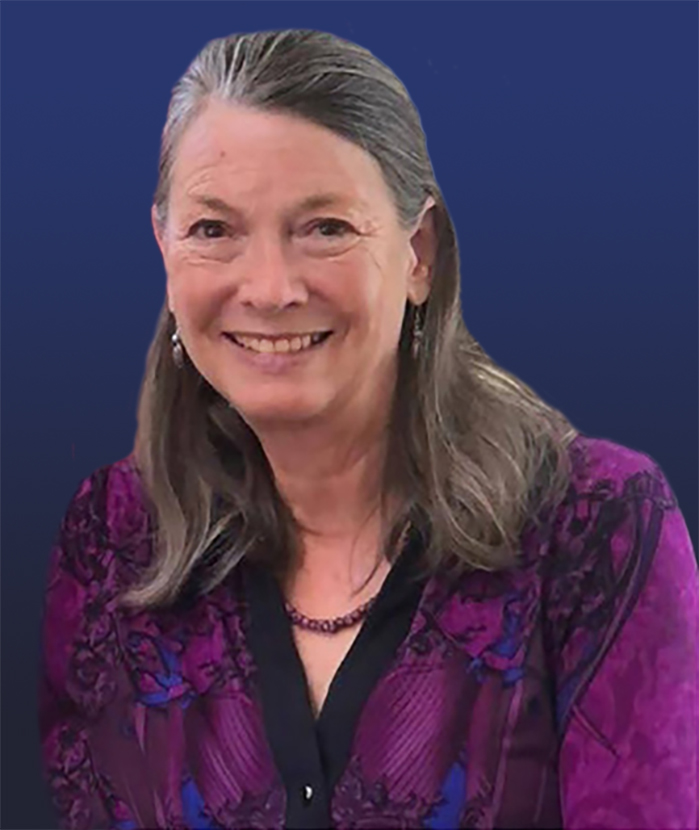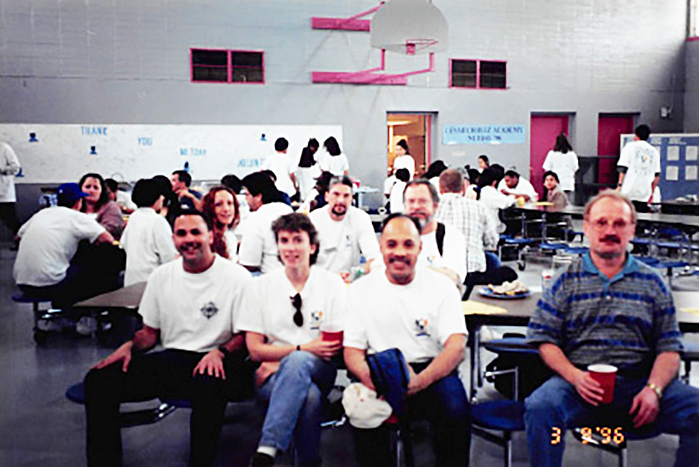Cathy Kennedy
Developer of CSM’s Networking Technology Lab and associated curriculum
1998 U.S. Community College Professor of the Year
Computing changed dramatically in the 1990s as networked PCs and Internet access raised the knowledge requirements of aspiring networking technicians. CSM Computer Science Professor Cathy Kennedy brought these advances home by launching the college’s Networking Technology Lab in 1995 and with it the curricula to train network engineers and certified technicians in fast-growing specialties. Her students linked thousands of computer users to the Internet and to each other, both in the well-paid jobs for which CSM prepared them and as volunteers in local schools.
For these and other strengths, the Carnegie Institute for the Advancement of Education named Kennedy its 1998 U.S. Community College Professor of the Year.
“I came from industry to be a teacher because people I knew suggested it,” Kennedy says. “I worked with a lot of programmers who had brand-new university degrees, but they did not always understand the practical needs of users.”
Kennedy’s neighbor Joan Bell worked in CSM’s evening program and mentioned a need for a part-time computer science instructor. Kennedy jumped at the chance. When a full-time job opened a couple of years later, she applied and got it. Along the way, she developed CSM’s first remote course taught entirely online. In those days, students and teachers patiently exchanged data at a glacial pace through telephone landlines connected to modems that resembled plunger-like rubber cups attached to the telephone handset.
“CSM had an advisory committee of 8–10 of the largest employers in the community who needed computer specialists,” Kennedy says. “They didn’t necessarily need computer scientists, or people with 4-year degrees, but they needed well-trained programming and networking professionals.”
Kennedy began by taking Novell courses herself to become a certified network engineer. Lacking equipment, the first networking courses she taught at CSM had to be lecture-only.
“Imagine learning how to network computers when all you have is your own computer that isn’t connected to anything,” Kennedy says.
“An instruction might say, ‘Connect Plug A to Socket B,’ but you didn’t have a chance to handle actual plugs, sockets or cables. In the real world, a myriad of unexpected things can go wrong. Having your hands on the actual equipment you will encounter on the job really makes a difference.”
As a member of the Bay Area’s Network Professionals Association (NPA), Kennedy learned that the association was looking for a local company that would donate space to house a new NPA training facility. “I said, ‘If I find the place, can you find the stuff?’”
CSM’s Frank Vaskelis and college President Peter Landsberger allotted Kennedy a building full of old kitchen equipment, possibly relics from a home economics program. Tech firms including Novell, Microsoft, Hewlett-Packard and IBM donated more than $100,000 in equipment.
CSM’s Networking Technology Lab opened October 25, 1995 and was heralded as a co-operation between the community, the college and the business world. Over the years, NPA members continued to donate their time to meet frequently with CSM students and to mentor and hire them.



CSM President Peter Landsberger, third from right, Prof. Cathy Kennedy, second from right, and Bay Area members of the Network Professionals Association formally open the college’s Networking Technology Labon Oct. 25, 1995. Photo courtesy Cathy Kennedy
CSM networking students found ways to give back. Kennedy and her CSM students took part in the first NetDay, March 9, 1996, an initiative whose volunteers brought Internet access to under-resourced California schools. CSM students also built a network for The Housing Investment Project (HIP) in San Mateo. In the days before Wi-Fi, students pulled and installed hundreds of yards of cable.
“It was very exhilarating and fun. Super, super fun,” Kennedy says.
“In 1996, Peter Landsberger nominated me for a Professor of the Year Award. At his request, I wrote a personal statement for the application, but soon forgot about it. I pretty much fainted two years later, when Peter called me one weekend morning and asked, ‘Are you sitting down?’”
Landsberger’s nomination letter calls her “a superb teacher, a natural collaborator and an able leader.”
Former student Dick Lee told the San Mateo Times: “She made something that can be a dry subject into something that’s really fun.”
In 1998, Kennedy was invited to the White House and met President Clinton—who had spent NetDay 1996 with Vice President Al Gore, an early Internet buff, wiring an under-resourced school in Contra Costa County.
Also in 1998, Kennedy started working on a Ph.D. in education at UC Berkeley, focusing on methods of measuring student learning. Finishing in 2001, she was hired away from CSM to join the Berkeley research staff.
While she wrote many papers on educational assessment that helped teachers to better evaluate student work in the digital age, she says, “in hindsight, although I enjoyed working with education researchers, I missed the collegiality and working directly with students at CSM.
“What I like about teaching is that every semester you get a fresh start. You get a chance, if not to get it right, to get it a little bit better.”

